Put your running title here: Elsevier General template for review
[Title Page]
Article Title
Authors
Author affiliations
Correspondence information: Corresponding author name, affiliation, detailed
permanent address, email address, telephone number
(Check the Guide for authors to see the required information on the title page)
1
�
Put your running title here: Elsevier General template for review
Put the title of your abstract here using both upper and lower case letters, Times
New Roman, 12 pts, bold, centered, double spaced
A. Authora, B. Authorb, C. Authora,一
a Department, University, Street, Postal-Code City, Country
b Laboratory, Institute, Street, Postal-Code City, Country
Abstract
This general template helps you on preparing manuscript for part of Elsevier Journals.
Use this document as a template if you are using Microsoft Word 6.0 or later. Here
comes self-contained abstract. Please read the Guide for Authors of your target journal
for the requirements of Abstract. Pay special attention to the word count.
PACS(optional, as per journal): 75.40.-s; 71.20.LP
Keywords: Keyword 1.D; Keyword 2.B (Read the Guide for Authors for
the
requirements for Keywords, including number, thesaurus, and classification indications)
一 Corresponding author. Tel.: +xx xxx xx xx; fax: +xx xxx xx xx. E-mail address: xxxxx@xxx.xx
2
�
Put your running title here: Elsevier General template for review
1. Introduction
The manuscript should be prepared and submitted according to the Guide for Authors
of your taget
journal.
. For your convenience, brief instructions on manuscript
preparation are recorded below.
Please DO consult a recent journal paper for style and conventions. You may find
samples on ScienceDirect. You need to check your manuscript carefully before you
submit it. The editor reserves the right to return manuscripts that do not conform to the
instructions for manuscript preparation.
2. General remarks on manuscript preparation
Generally, double line spacing, 12 pts font, and Times New Roman are preferred
when you type the manuscript for review. This text formatting is provided in order to
facilitate referee process and is also required for proper calculation of your manuscript
length. Typing your manuscript follows the order: Title, Authors, Affiliations, Abstract,
Keywords, Main text, Acknowledgements (optional), References (optional), Figure
captions, Figures and Tables. Please consult the Guide for Authors for the proper
organization of the main text. Ensure that each new paragraph is clearly indicated. Some
journals also require lines to be numbered throughout the manuscript. You will usually
want to divide your article into numbered sections and subsections. Present figures and
tables at the right places mentioned in the Guide for Authors.
Most formatting codes are removed or replaced while processing your article so
there is no need for you to use excessive layout styling. Please do not use options such
as automatic word breaking, double columns or automatic paragraph numbering
3
�
Put your running title here: Elsevier General template for review
(especially for numbered references). Do use bold face, italic, subscripts, superscripts,
etc., as appropriate.
2.1 Illustrations
Many journals required that figures and tables to be presented on separate pages at
the end of the manuscript. The preferable file formats are: EPS (for vector graphics) and
TIF (for bitmaps). However, PDF and MS Office (Word, Excel, Powerpoint figures)
files are also acceptable. Use file names that enable to identify their contents in terms of
figure number and format (e.g.
fig1.tif, fig2.eps, fig3.pdf). All artwork has to be
numbered according to its sequence in the text. All of them should have captions.
Colour figures in printed version require an extra fee for most journals. Generally, no
vertical rules (lines) should be used in tables. Illustrations should not duplicate
descriptions that appear elsewhere in the manuscript.
Please
look
at
http://www.elsevier.com/wps/find/authors.authors/authorartworkinstructions for more
detailed instructions on artwork preparations.
2.2 Equations
Conventionally, in mathematical equations variables and anything thatrepresents a
value appear in italics. You are encouraged to use equation-editing tools such as
mathtype to edit equations. Please make use of the numbering and referencing functions.
2.3 Citations
4
�
Put your running title here: Elsevier General template for review
There are different styles of in-text citations and reference lists. DO consult the Guide
for Authors to see the given examples. Pay special attention to the format of author
names, journal names, publication year, volume and page span.
Acknowledgements
This section is optional.
References
5
�
Put your running title here: Elsevier General template for review
Figure Captions
Fig.1 Put at this page the collected figure captions. The figure captions should be as
brief as possible. It should also contain sufficient information that readers do not need to
refer to the main text.
Fig.2 Put here the figure caption of figure 2 (also the legend to figure 2).
Fig. 3
6
�
Put your running title here: Elsevier General template for review
Fig. 1. Sample figure. Do not reduce or enlarge any images after placement in an MS
Office application as this can lead to loss of image quality. While inserting vector
graphics ensure that you use only truetype fonts. These should preferably be in one, or a
combination, of the following fonts: Arial, Courier, Helvetica, Symbol, Times.
7
�
Put your running title here: Elsevier General template for review
Table 1
Sample table: (使用三线表)
Parameter
a (Å)
Δ Ea (eV)
…
…
Compound 1
Compound 2
4.5832
1.745
…
…
4.9365
1.592
…
…
a This is an example of a table footnote.
8
�
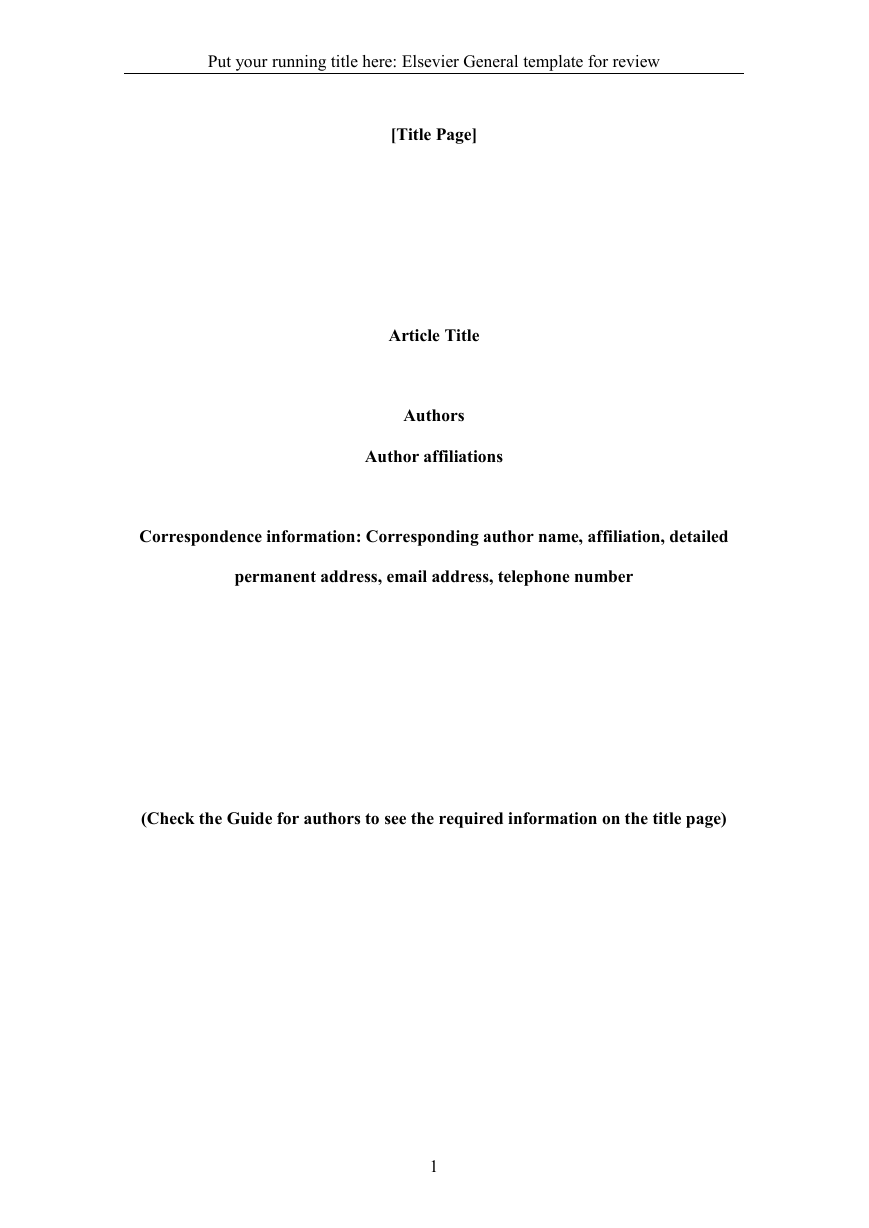
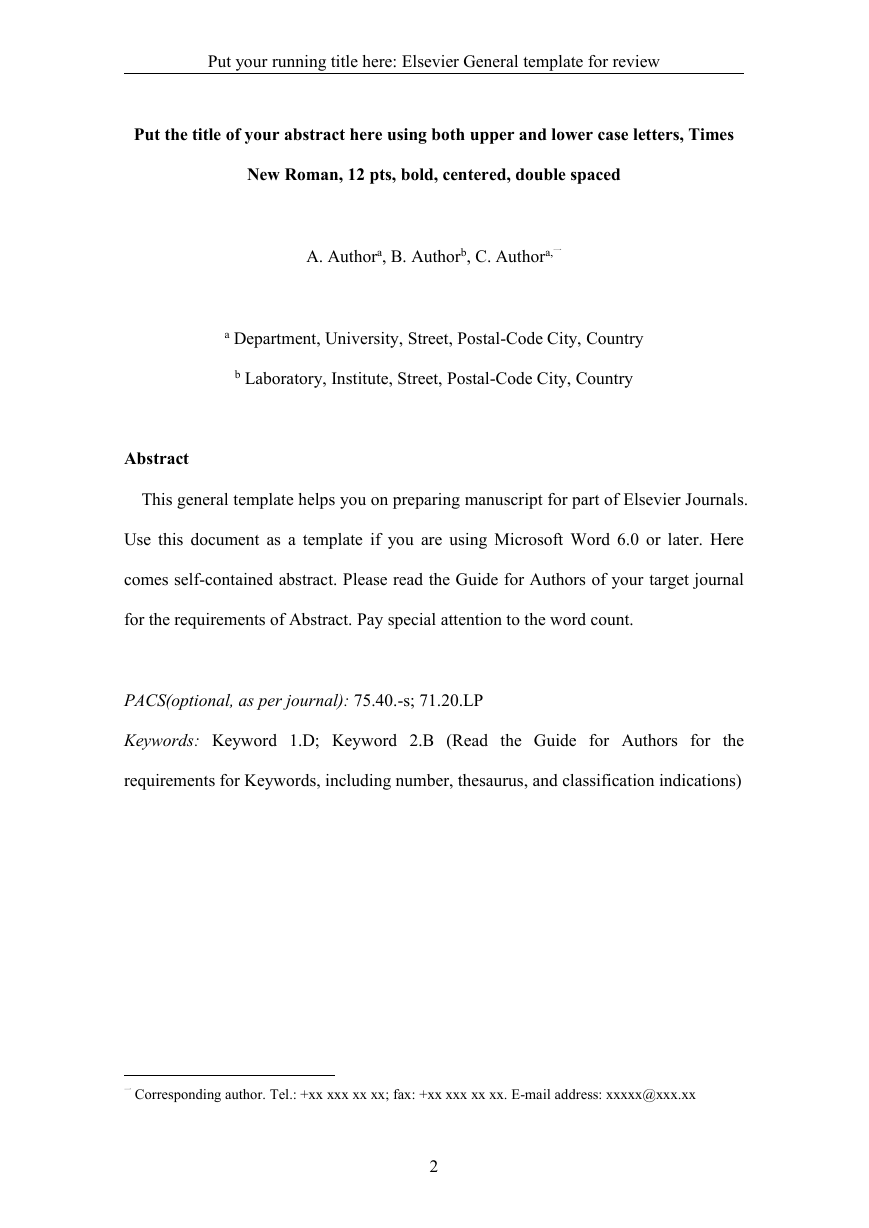
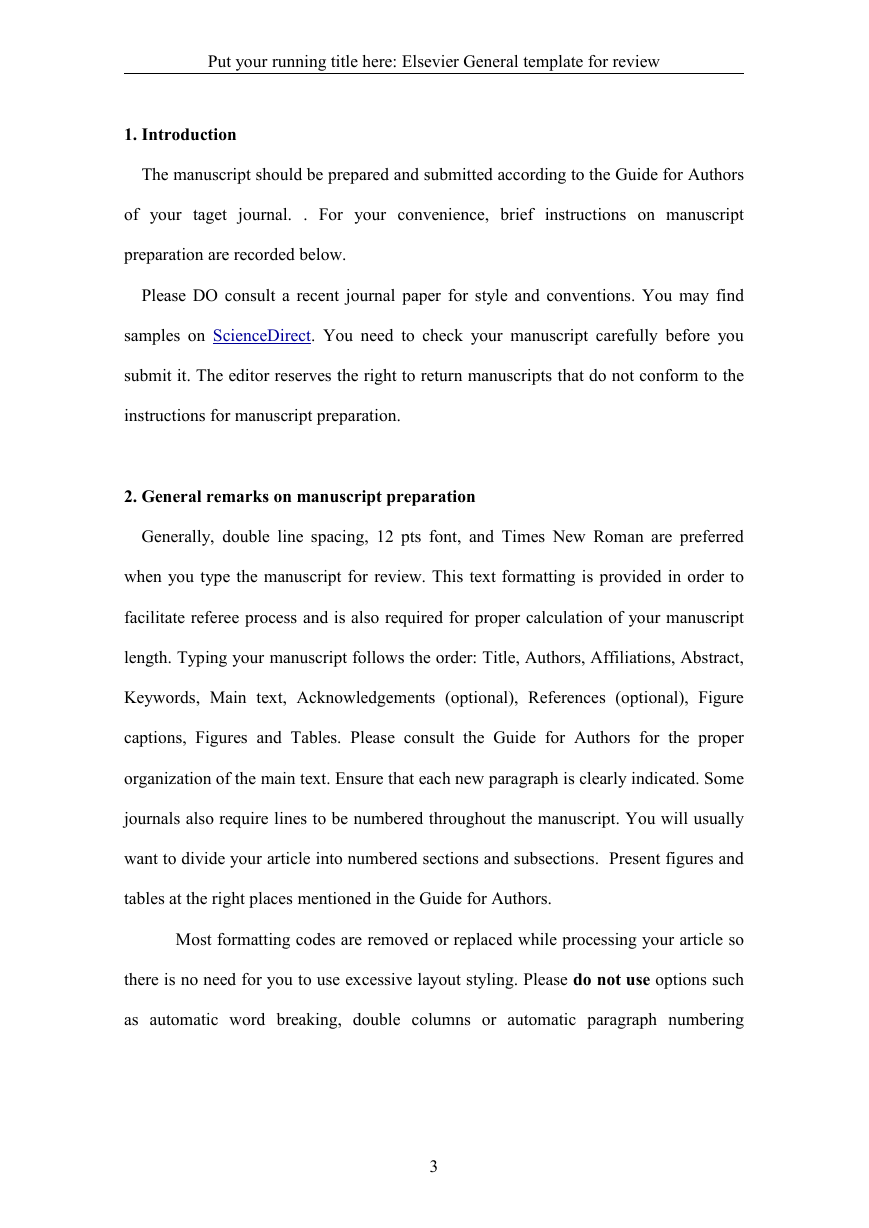

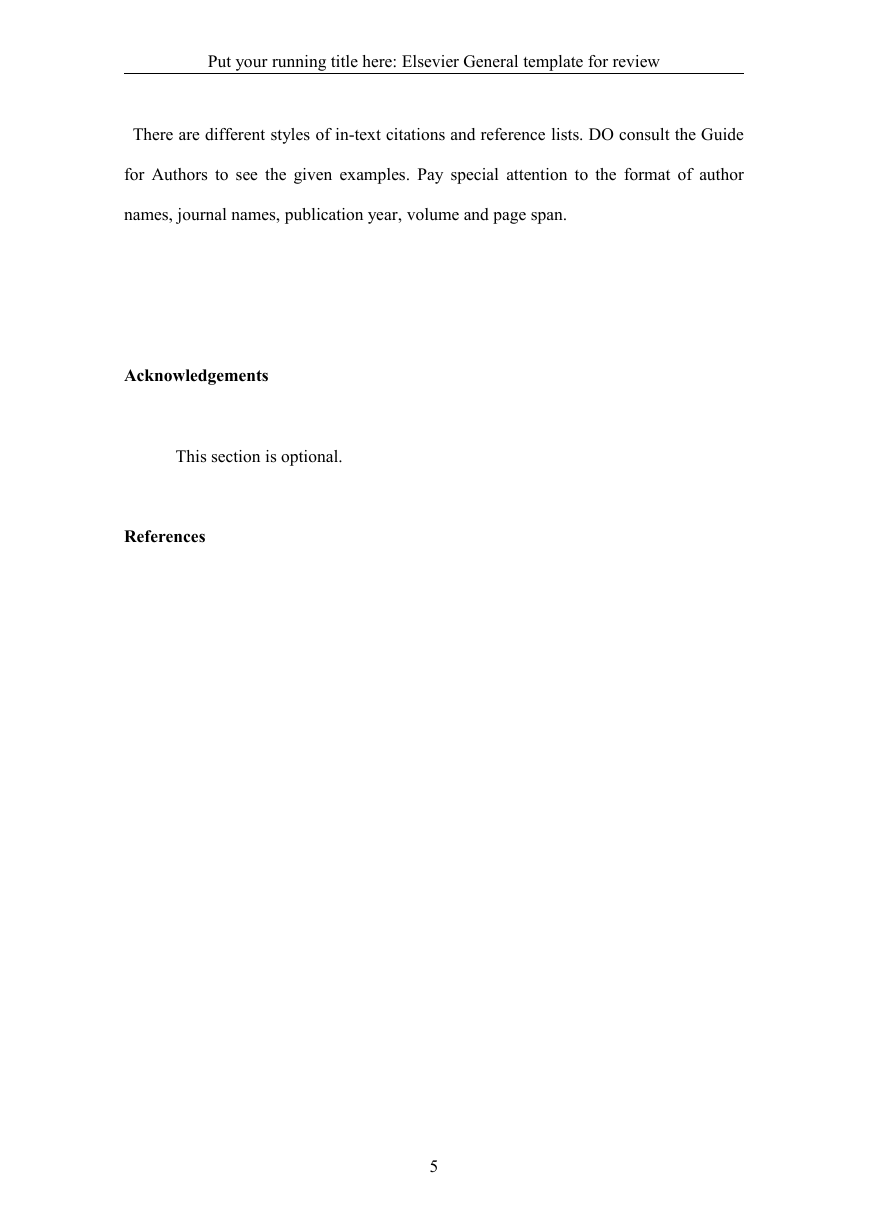
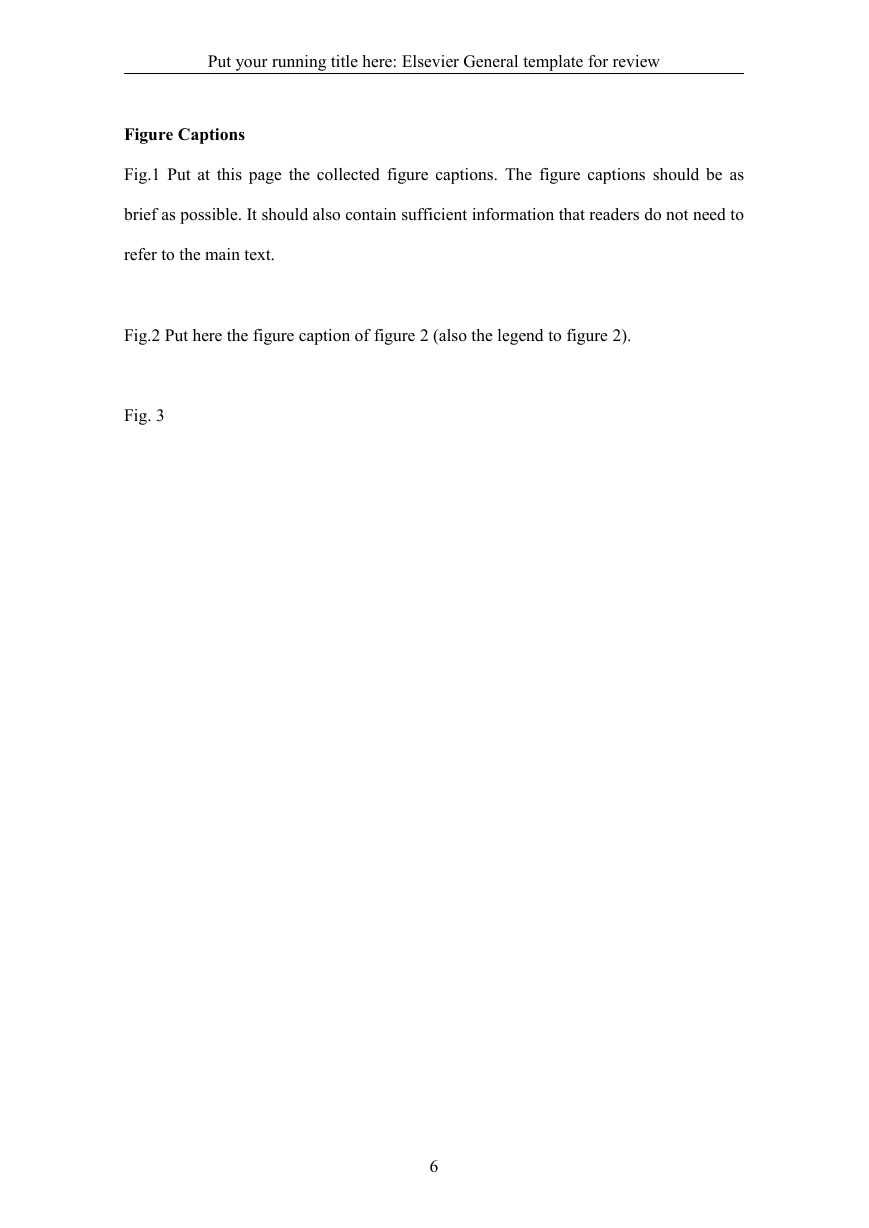
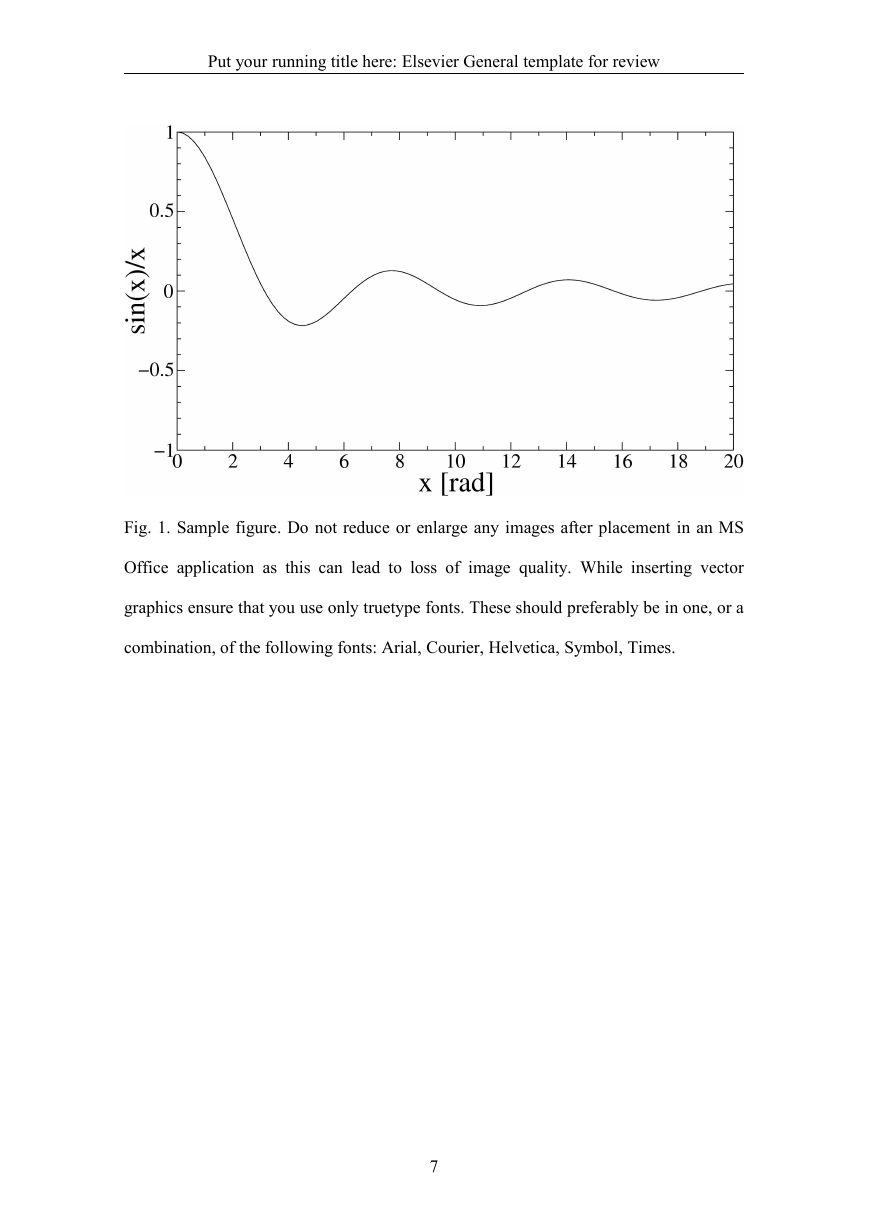
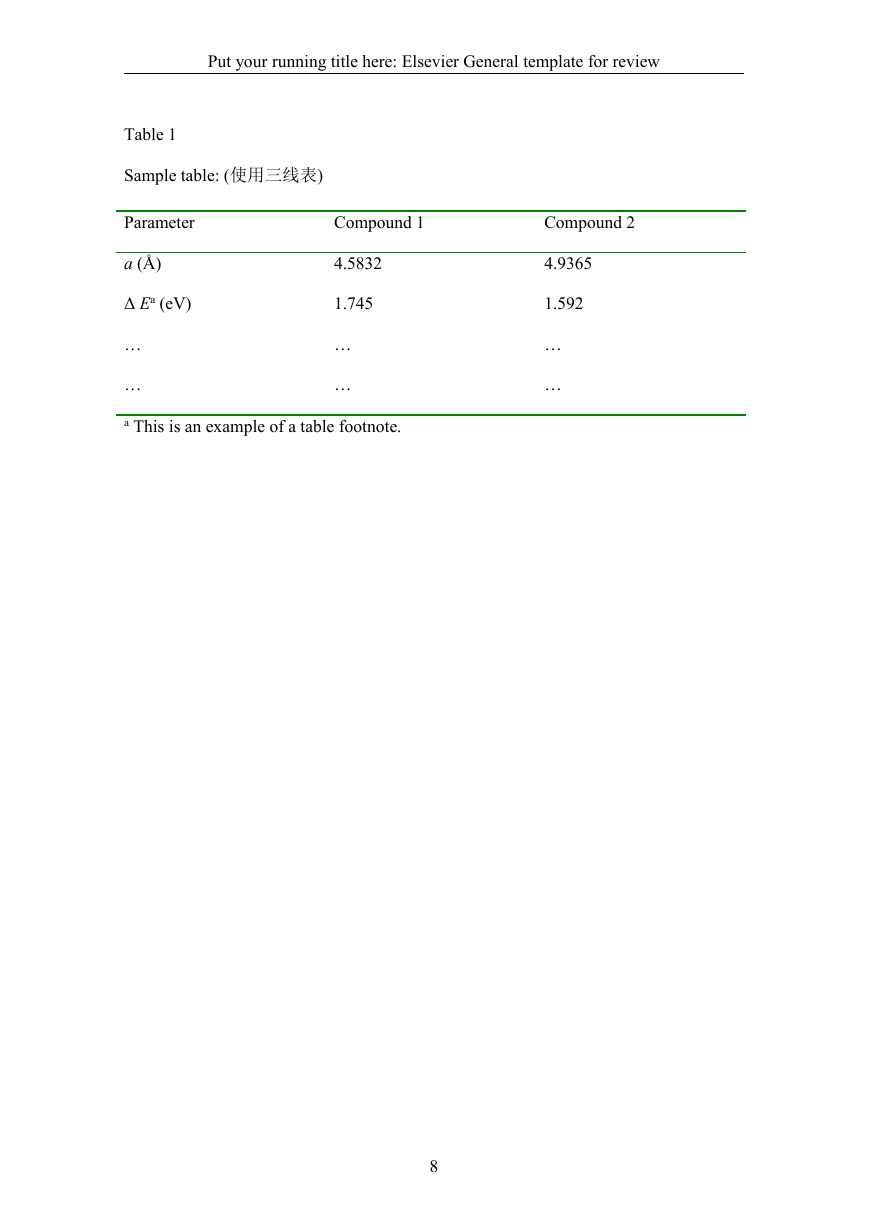








 2023年江西萍乡中考道德与法治真题及答案.doc
2023年江西萍乡中考道德与法治真题及答案.doc 2012年重庆南川中考生物真题及答案.doc
2012年重庆南川中考生物真题及答案.doc 2013年江西师范大学地理学综合及文艺理论基础考研真题.doc
2013年江西师范大学地理学综合及文艺理论基础考研真题.doc 2020年四川甘孜小升初语文真题及答案I卷.doc
2020年四川甘孜小升初语文真题及答案I卷.doc 2020年注册岩土工程师专业基础考试真题及答案.doc
2020年注册岩土工程师专业基础考试真题及答案.doc 2023-2024学年福建省厦门市九年级上学期数学月考试题及答案.doc
2023-2024学年福建省厦门市九年级上学期数学月考试题及答案.doc 2021-2022学年辽宁省沈阳市大东区九年级上学期语文期末试题及答案.doc
2021-2022学年辽宁省沈阳市大东区九年级上学期语文期末试题及答案.doc 2022-2023学年北京东城区初三第一学期物理期末试卷及答案.doc
2022-2023学年北京东城区初三第一学期物理期末试卷及答案.doc 2018上半年江西教师资格初中地理学科知识与教学能力真题及答案.doc
2018上半年江西教师资格初中地理学科知识与教学能力真题及答案.doc 2012年河北国家公务员申论考试真题及答案-省级.doc
2012年河北国家公务员申论考试真题及答案-省级.doc 2020-2021学年江苏省扬州市江都区邵樊片九年级上学期数学第一次质量检测试题及答案.doc
2020-2021学年江苏省扬州市江都区邵樊片九年级上学期数学第一次质量检测试题及答案.doc 2022下半年黑龙江教师资格证中学综合素质真题及答案.doc
2022下半年黑龙江教师资格证中学综合素质真题及答案.doc